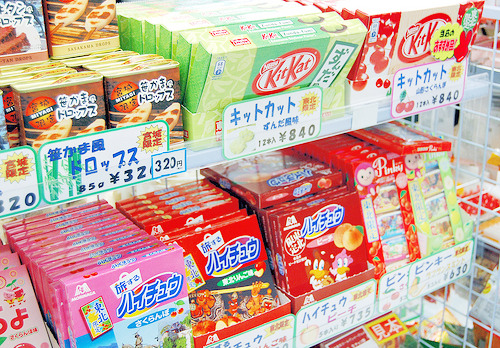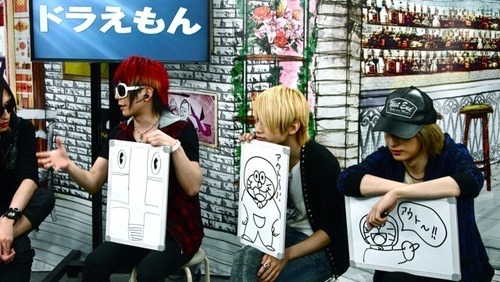 Most textbooks explain the usage of カタカナ as mostly for loan words, emphasis, and onomatopoeia.
Most textbooks explain the usage of カタカナ as mostly for loan words, emphasis, and onomatopoeia. For example :
The picture above is of Japanese candies, however, most of them are written in Katakana. Many candy names are loan words from the English language. "Kit Kat", "Pinky", and "Hi-Chew". I think they used カタカナ to show the "foreign-ness" of the candy. Using ひらがな or かんじmight give the merchandise a more familiar atmosphere rather than a foreign and innovative feel.
In the picture to the left,
カタカナ is used for onomatopoeia purposes. The Japanese textbooks explain how katakana is used to express onomatopoeia.
"チン” and "ガ-シ” is used for the sounds of the elevator. The "chin" of the elevator bell and the "gaashi" of the elevator door. Using カタカナ for onomatopoeia purposes allows the reader to quickly pick up and differentiate between the sound effects and the actual dialogue of the cartoon.
"チン” and "ガ-シ” is used for the sounds of the elevator. The "chin" of the elevator bell and the "gaashi" of the elevator door. Using カタカナ for onomatopoeia purposes allows the reader to quickly pick up and differentiate between the sound effects and the actual dialogue of the cartoon.
This picture shows ドラえもん。I realized that half this character's name is ひらがな and the other half is カタカナ. The purpose of this might be to emphasize his name more. Since ドラえもん is a very popular character, I believe his name was written this way to
show his uniqueness as a "mascot" of the Japanese cartoon culture.
カタカナ,ひらがな, and かんじ are all used for different purposes. I personally believe that it is usually up to the actual writer to determine how he or she wants to combine these different Japanese characters. Indeed, there is a set reason for these different characters for example カタカナ is used for (usually) loan words, emphasis, or onomatopoeia, however, it all depends. There are always exceptions.

